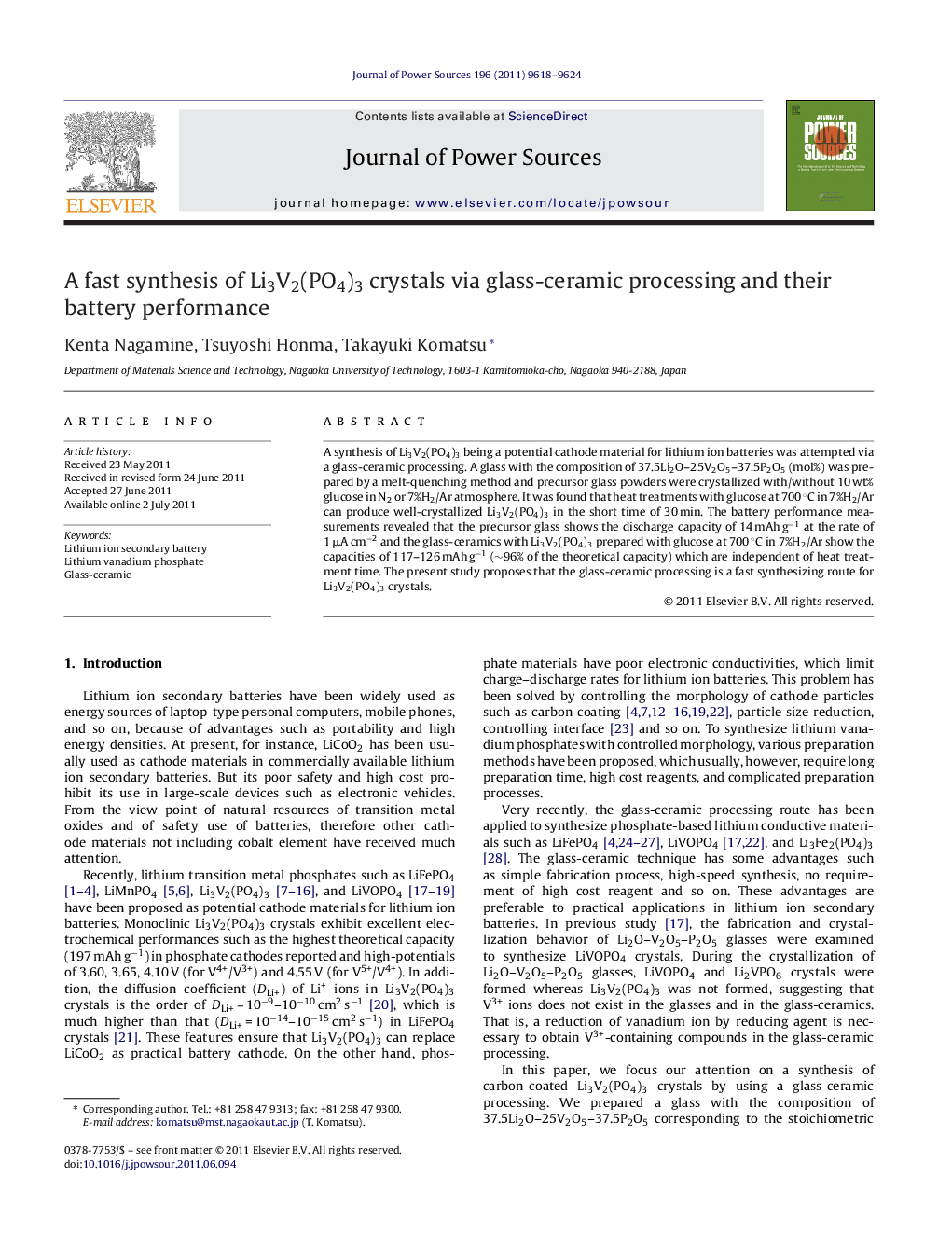| کد مقاله | کد نشریه | سال انتشار | مقاله انگلیسی | نسخه تمام متن |
|---|---|---|---|---|
| 1284718 | 973084 | 2011 | 7 صفحه PDF | دانلود رایگان |

A synthesis of Li3V2(PO4)3 being a potential cathode material for lithium ion batteries was attempted via a glass-ceramic processing. A glass with the composition of 37.5Li2O–25V2O5–37.5P2O5 (mol%) was prepared by a melt-quenching method and precursor glass powders were crystallized with/without 10 wt% glucose in N2 or 7%H2/Ar atmosphere. It was found that heat treatments with glucose at 700 °C in 7%H2/Ar can produce well-crystallized Li3V2(PO4)3 in the short time of 30 min. The battery performance measurements revealed that the precursor glass shows the discharge capacity of 14 mAh g−1 at the rate of 1 μA cm−2 and the glass-ceramics with Li3V2(PO4)3 prepared with glucose at 700 °C in 7%H2/Ar show the capacities of 117–126 mAh g−1 (∼96% of the theoretical capacity) which are independent of heat treatment time. The present study proposes that the glass-ceramic processing is a fast synthesizing route for Li3V2(PO4)3 crystals.
► Li3V2(PO4)3 crystals were synthesized successfully using a glass-ceramic processing.
► Precursor glass powders were crystallized with glucose (10 wt%) in 7%H2/Ar atmosphere.
► Glass-ceramics showed the capacities of 117–126 mAh g−1 (∼96% of the theoretical capacity).
Journal: Journal of Power Sources - Volume 196, Issue 22, 15 November 2011, Pages 9618–9624